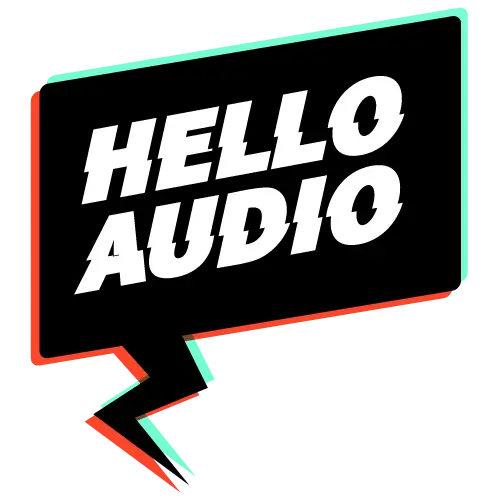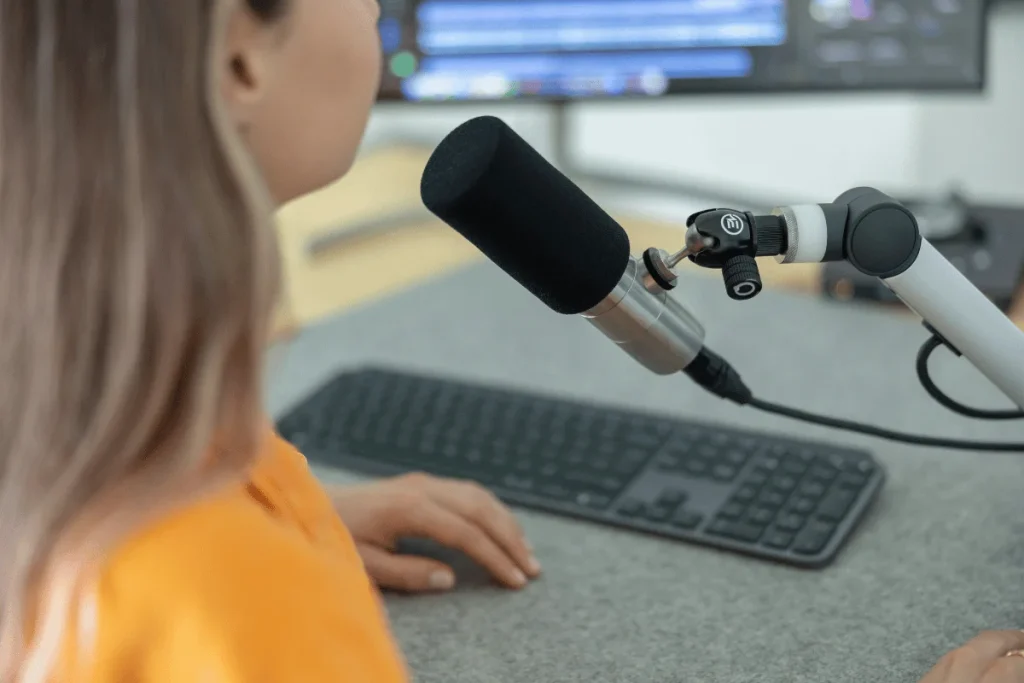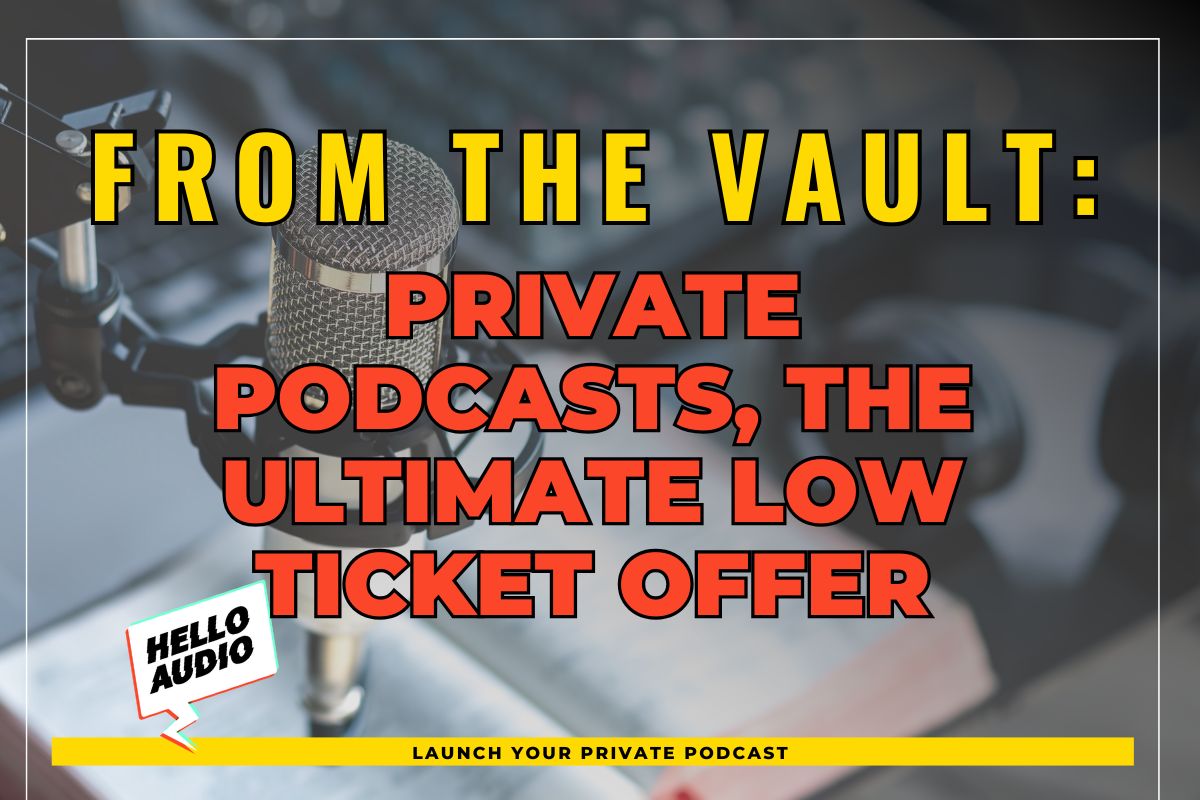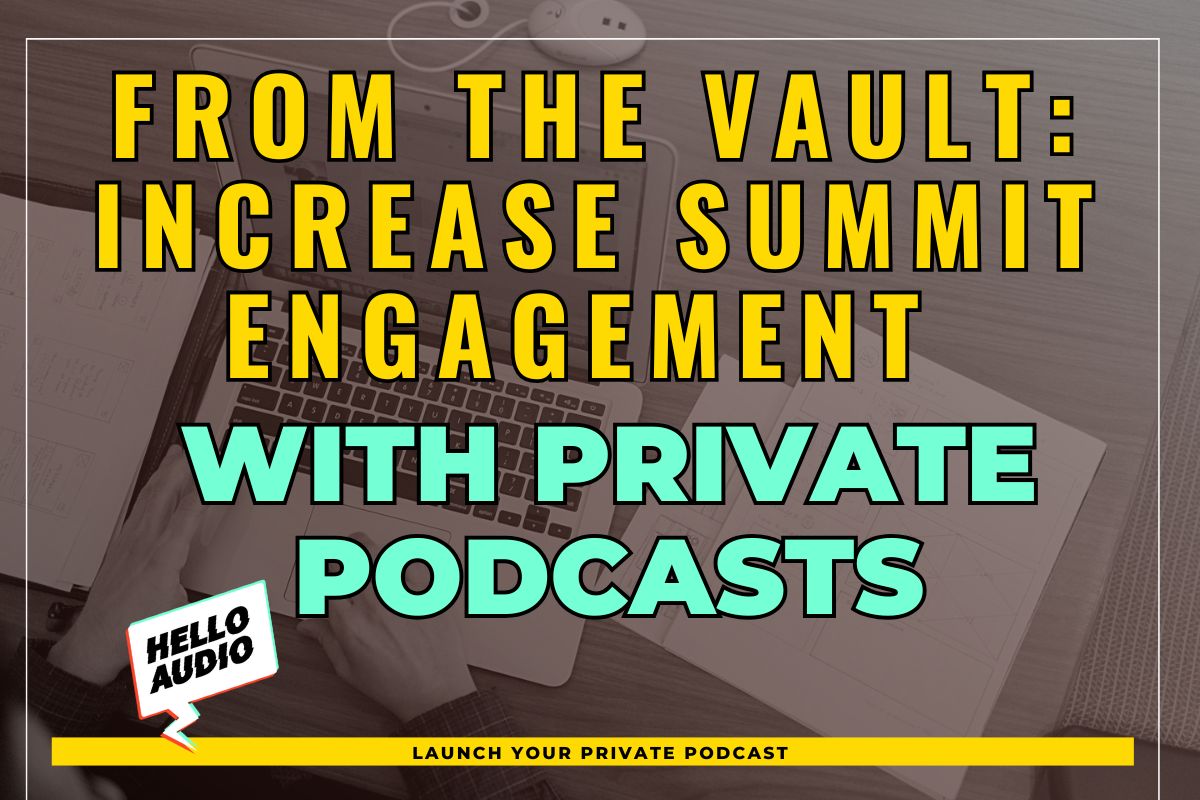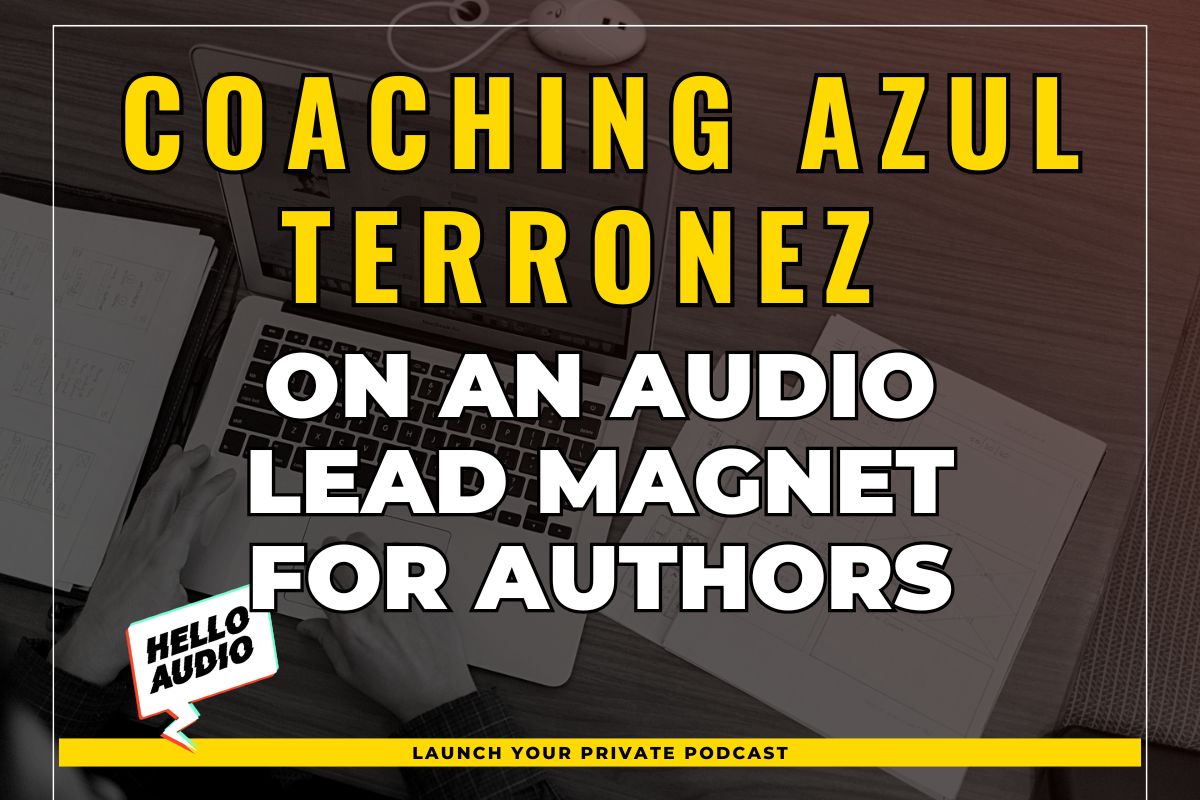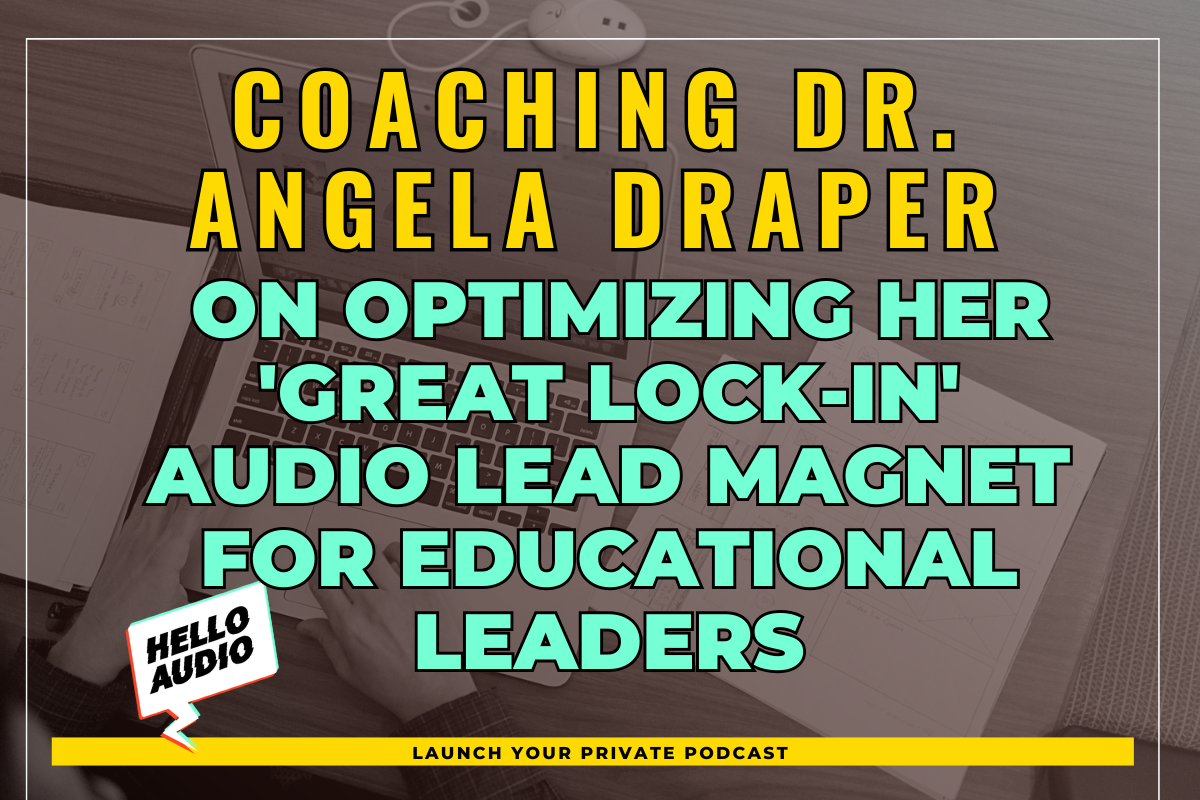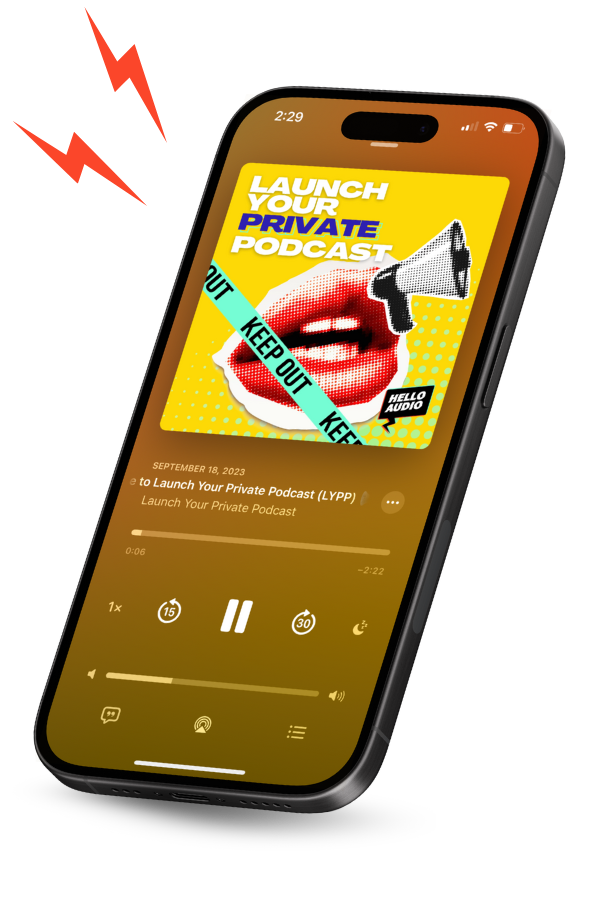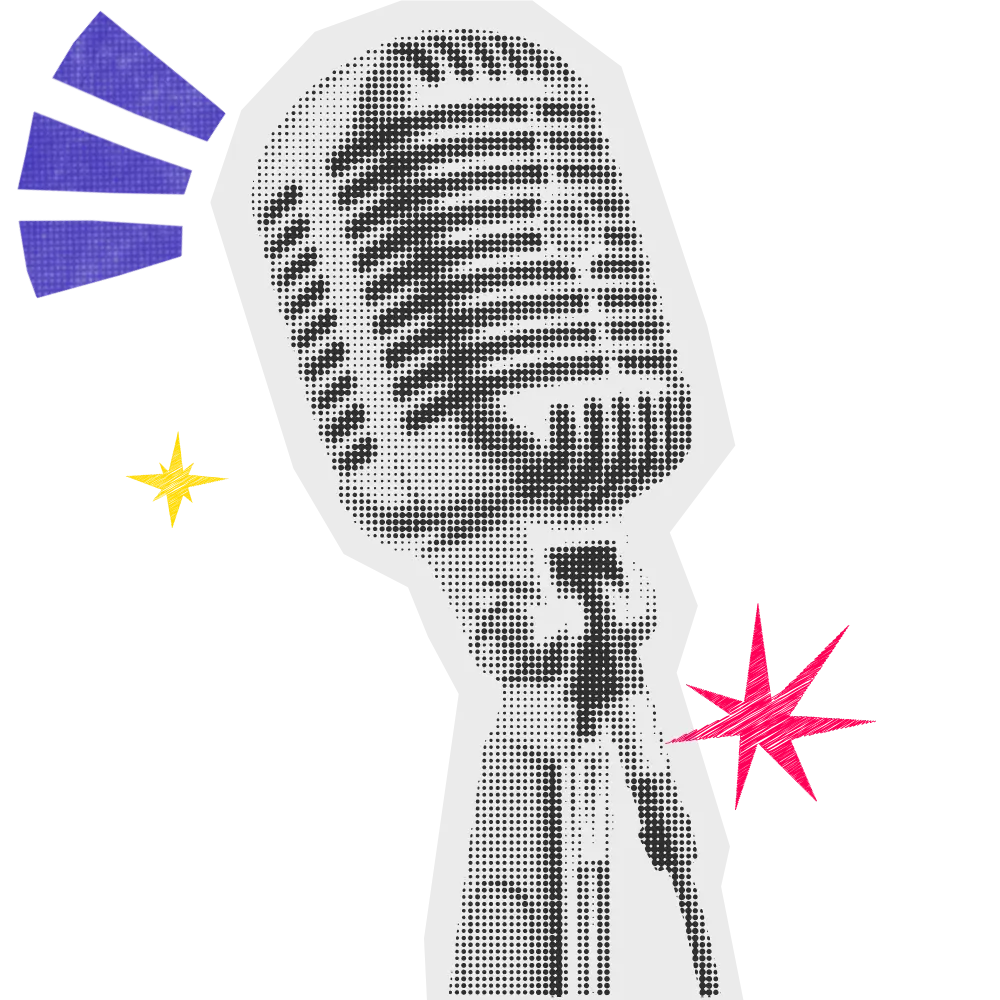When people ask “How long should a podcast be?” they’re really looking for a magic formula. But there isn’t one.
What matters is how long you can keep someone genuinely interested. A tight 12-minute episode that leaves them wanting more will beat a rambling hour every time. On the flip side, if your topic and storytelling can carry a 90-minute conversation, listeners will stay with you.
The length is just the container; what’s inside has to be worth the time. In this guide, we’ll break down why length matters, what the averages tell us, and how to figure out the sweet spot for your show.
Want your listeners to finish your episodes, no matter the length?
Hello Audio turns your existing content into private podcast feeds that stream right to their favorite podcast app. You can drip episodes over time, expire old ones, or personalize feeds so every listener gets exactly what they need, when they need it. That means less drop-off, more engagement, and happier listeners.
Why Podcast Length Matters
Length is part of your show’s design. Get it wrong, and you can throw off the listener’s experience, whether that’s by dragging things out until interest fades or ending before they’ve had their fill.
The right length makes sure your ideas land, your pacing feels natural, and your listeners stay engaged from start to finish.
Length also sets expectations. If your episodes are consistently around the same duration, listeners can build you into their routines, whether that’s a commute, a workout, or winding down at night. Break that rhythm too often, and you make it harder for them to stick around.
Most importantly, length influences how people talk about and recommend your show. An episode that feels exactly as long as it needs to be, with no fluff, no rush, is more likely to be replayed, shared, and remembered. That’s why it’s worth treating length as a strategic choice.
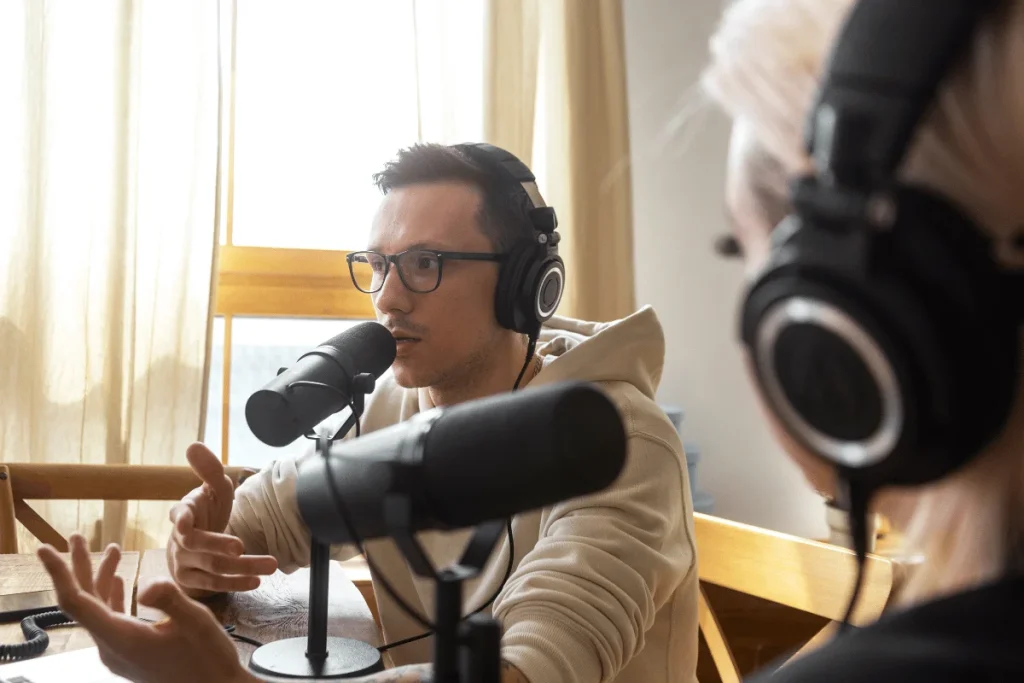
How Long Should a Podcast Be?
There’s no single magic number. However, averages help provide a starting point.
Dan Misener’s deep dive in 2018 into almost 19 million episodes reveals that the average length lands around 41 minutes and 31 seconds, and it’s stayed stubbornly consistent over the years.
Buzzsprout’s data backs this up. As of mid-2025:
- About 30% of episodes run 20–40 minutes
- Another 20% land in the 40–60 minute range
Still, exceptions exist and thrive. Here’s what doesn’t change:
- A solid 20–45 minutes is common and comfortable.
- Your content and format should drive the length, not trends.
- If what you’re saying takes 20 minutes, deliver it. If it takes two hours, be sure it’s compelling.
In short: aim for that 20-40 minute window unless your topic demands otherwise. Use these averages as context, not a rule.
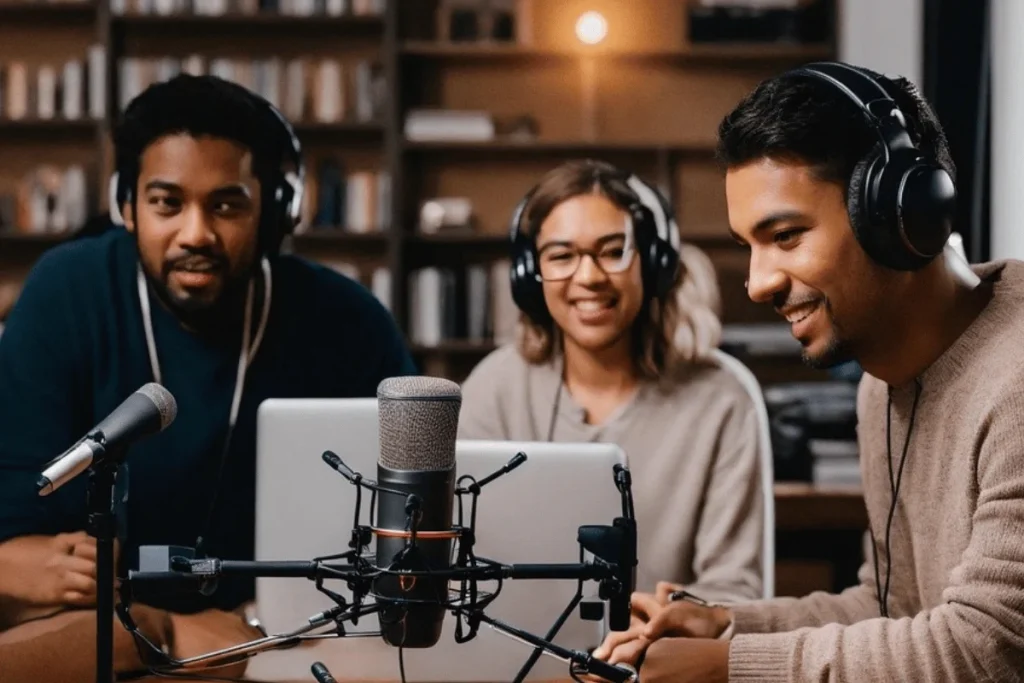
Factors That Influence Ideal Podcast Length
The length of a podcast comes down to your content, audience, and the way you tell your story.
Here are the most significant factors that shape episode length:
1. Topic or Genre
Your subject matter is the first clue. News updates and quick tips can be wrapped quickly.
Deep dives into true crime, business case studies, or long-form interviews often require more time. The aim is to give the topic enough room without drifting into filler.
2. Format
Different formats naturally demand different runtimes:
- Interviews, panel discussions, and co-hosted shows often run longer because of back-and-forth conversation.
- Solo shows tend to be shorter since it’s harder for one voice to hold attention for over 40 minutes.
- Narrative or documentary-style shows vary based on the complexity of the story.
3. Audience
Length should fit your listeners’ habits. Commuters might prefer episodes under 30 minutes.
Gym-goers or weekend listeners may welcome 45-minute to hour-long episodes. Kids’ shows usually stay under 15 minutes. Age, lifestyle, and listening preferences all play a role.
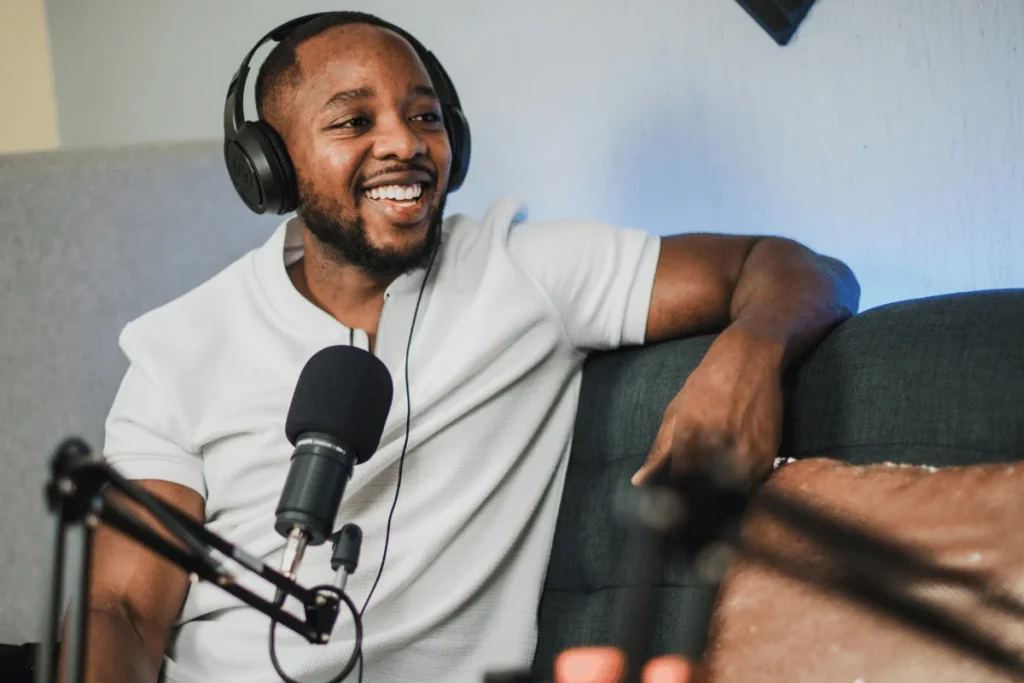
4. Competitor Norms
If podcasts in your specific niche have an average of 25 minutes, then it’s good to start with a similar length, as it helps meet audience expectations.
From there on, you can adjust based on feedback and performance.
5. Storytelling Skill
If you can keep an audience engaged, you can go longer. If not, shorter is better.
Stretching a topic only works if you can make every extra minute compelling.
6. Publishing Schedule
Daily podcasts are usually short to keep production sustainable. Weekly or monthly shows can afford to be longer since there’s more time to prepare and more appetite for depth.
The podcast length should match your topic, format, and audience, while maintaining consistent production and ensuring your content is worth every minute.
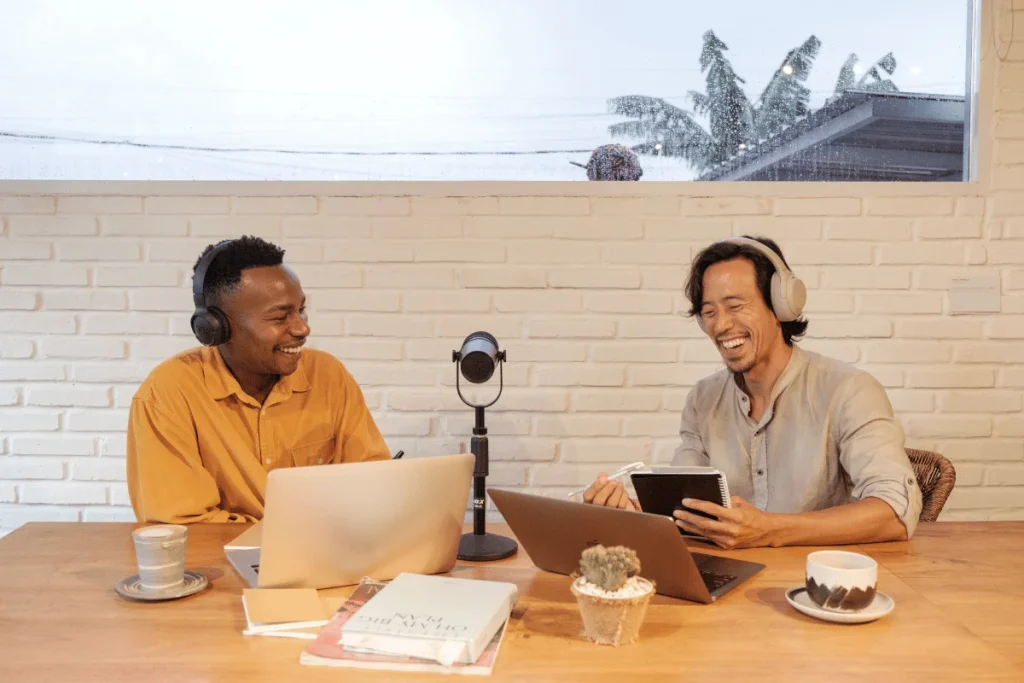
Pros and Cons of Short vs. Long Episodes
Short podcasts can feel snappy and accessible, while long ones give you space to dig in. Each format comes with trade-offs you’ll want to weigh before committing.
| - Easy to fit into daily routines like commutes, coffee breaks, or workouts. - Less intimidating for new listeners. - Faster to record, edit, and release. - Lower production costs if renting space/equipment. | - Limited time for deep dives or complex topics. - Requires tight podcast scripting and editing, leaving no room for connection. - Listeners may expect more frequent episodes to make up for brevity. |
|
| - Room for in-depth discussions, layered storytelling, and extended interviews. - Builds authority and connection in your niche. - Allows organic, free-flowing conversations. - Great for long commutes or dedicated listening sessions. | - Harder to keep attention without strong pacing. - More time-intensive to prepare, record, and edit. - Risk of filler or going off-topic. - Can be overwhelming for casual or first-time listeners. |
Short episodes keep things punchy, but in long episodes, you have the freedom to explore your ideas in-depth. But whichever you choose, the challenge is making sure every minute feels worth it, and that’s where delivery matters as much as length.
Hello Audio helps you shape the listening experience so your episodes land exactly as intended. With tools to automate episode publishing, track listener behavior, and customize RSS feeds, you can spend less time on tech and more time creating great content.
Watch the instant demo video to see how it works in action.
How to Choose the Ideal Podcast Length for Your Show
By now, you know the main factors that shape podcast length. The next step is deciding what works for your specific show.
Here’s a simple way to narrow it down:
- Start with your goal: Ask yourself what each episode is meant to achieve, such as quick updates, in-depth interviews, or narrative storytelling. The goal will naturally set a ballpark range for your runtime.
- Look at your strongest content: Record a few test podcast episodes and see when the energy drops. If your best material consistently wraps up at 22 minutes, that’s a sign to stop there. If you hit your stride at 40, build around that.
- Time it against real-life listening habits: Imagine your listener’s day. Where will your podcast fit: morning commute, workout, late-night wind-down? Your episode should slot into that window without feeling rushed or padded.
- Check what’s working in your niche: Study similar shows. If you notice most of them land between 25 and 35 minutes, it’s because that’s what their shared audience expects. You can match it, or deliberately go longer/shorter to stand out.
- Test and adjust: Launch with a consistent length for your first 5–10 episodes. Watch your listener retention data and feedback. If people drop off halfway, trim it down. If they stick around to the end and ask for more, consider expanding.
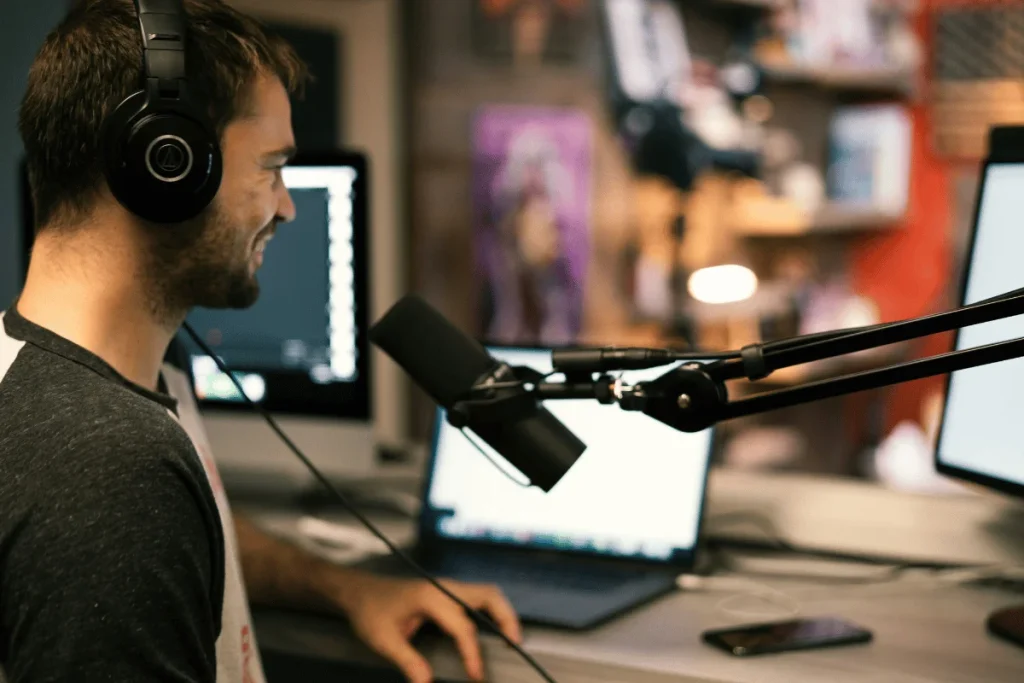
Tips to Keep Your Audience Engaged Regardless of Length
If your content holds people’s attention, the exact runtime matters a lot less. The goal is to make every minute worth listening to.
Let’s break down some practical ways to keep listeners hooked, no matter how long your episode runs:
- Open strong: Hook listeners in the first 30 seconds. Tease what’s coming, ask a provocative question, or start with a story that instantly draws them in.
- Deliver value quickly: Don’t make people wait ten minutes for the good stuff. Share valuable insights, interesting details, or entertaining moments right from the start.
- Mix up the pace: Switch up the pace with fresh segments, stories, or guests to avoid monotony and keep the energy high, especially in longer episodes.
- Keep it relevant: Talk about what matters to your audience. This means staying tuned in to their interests, industry news, or trending topics.
- Sound professional: Poor audio is an instant turn-off. Invest in a decent mic, edit out distractions, and keep your sound clean.
- Engage beyond the episode: Reply to listener comments, run Q&As, share behind-the-scenes updates, or create a space (like a group or forum) where your audience can interact with you and each other.
- Involve your audience in the content: Ask for feedback, stories, or questions, then feature them in your show. This makes listeners feel valued and part of the process.
- Reward loyalty: Contests, giveaways, shout-outs, or bonus content can motivate people to stick around and spread the word.
- Leverage audience engagement tools: Platforms like Hello Audio let you send exclusive episodes, personalized RSS feeds, or time-sensitive content directly to listeners’ podcast apps, helping you stay connected and top-of-mind between regular releases.
Whether your podcast runs ten minutes or two hours, keeping people engaged comes down to energy, relevance, and connection. If they feel invested in your show, they’ll stay and come back.
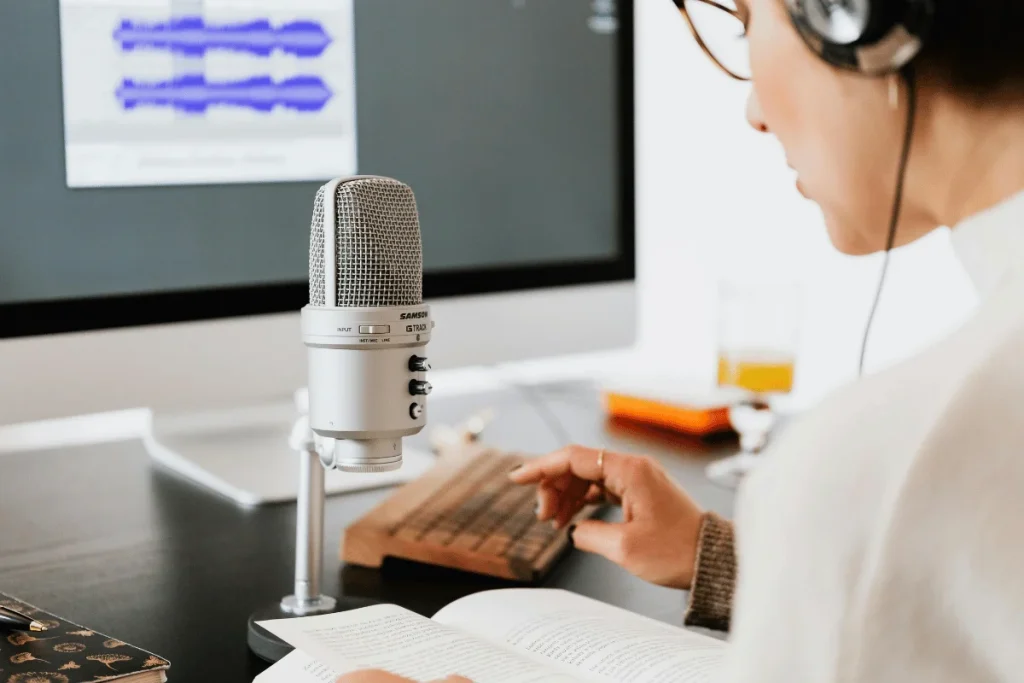
Frequently Asked Questions (FAQs)
Got questions about how podcast length really works? Here are quick answers to the questions creators ask most:
Should All Episodes Be Uniform in Length?
Not necessarily. Consistency helps set listener expectations, but forcing every episode into the same runtime can hurt quality. Let the content dictate the length, keep big variations predictable.
Say most of your episodes are 30 minutes. If you’re planning a quick 15-minute extra or an extended 45-minute deep dive, tell listeners beforehand.
Can Podcast Length Affect SEO?
Search engines don’t rank shows by runtime. But your length affects metrics, like completion rate and listener retention, which can influence visibility indirectly.
These, in turn, can influence how podcast platforms recommend your show. A well-paced 20-minute episode that people finish is better for discoverability than a 60-minute one they abandon halfway.
How Does Podcast Length Affect Monetization?
Ad revenue models often charge per ad slot, so longer episodes can fit more ads, but only if your audience sticks around. High retention is more valuable than extra minutes.
For subscription or Patreon-based shows, the length matters less than the perceived value: engaged listeners will support you whether it’s a tight 15 minutes or an hour-long deep dive.
Conclusion
There’s no one-size-fits-all answer to podcast length. What matters most is matching your runtime to your content, format, and audience habits, and then delivering value in every single minute.
Whether you aim for a quick, ten-minute update or a long, immersive conversation, make the length a conscious choice, not an afterthought. If your episodes feel complete, keep people listening, and fit into their lives, you’ve nailed it.
Your ideal podcast length won’t matter if people don’t finish the episode. Hello Audio gives you the tools, from video-to-audio conversion to automated tagging and advanced feed controls, to keep listeners engaged the whole way.
Sign up today and get easy access to features that simplify podcast management.

